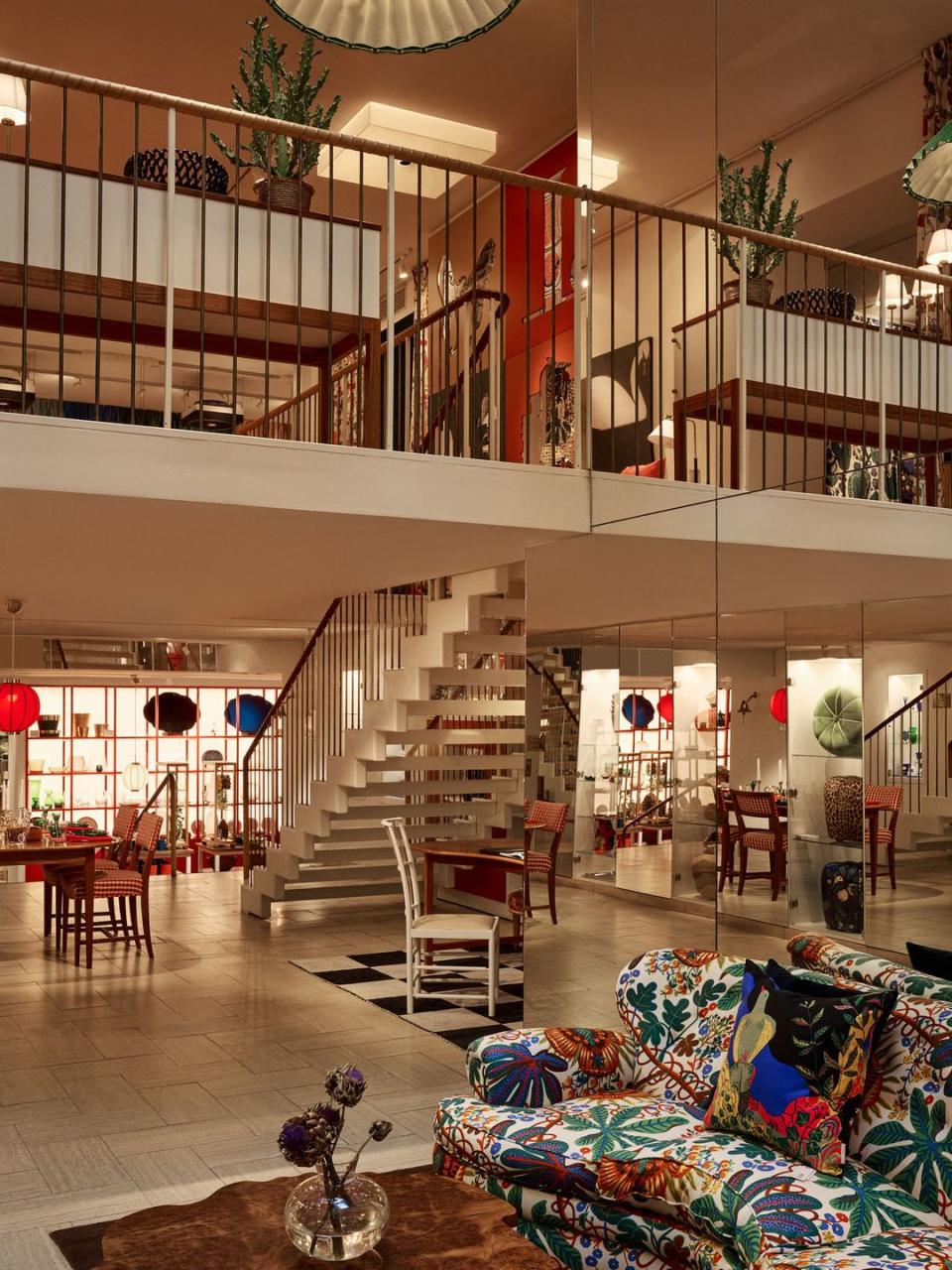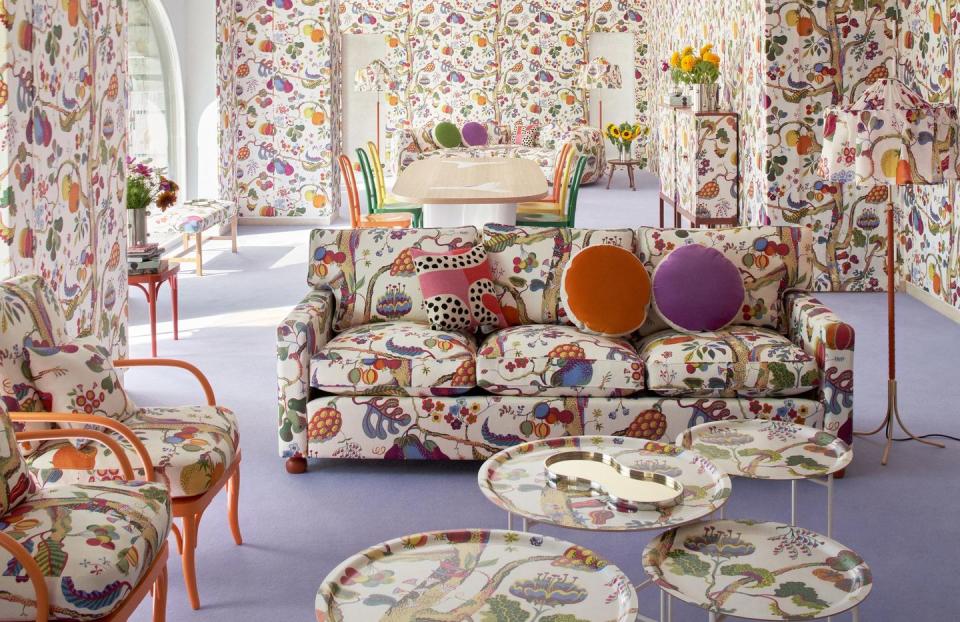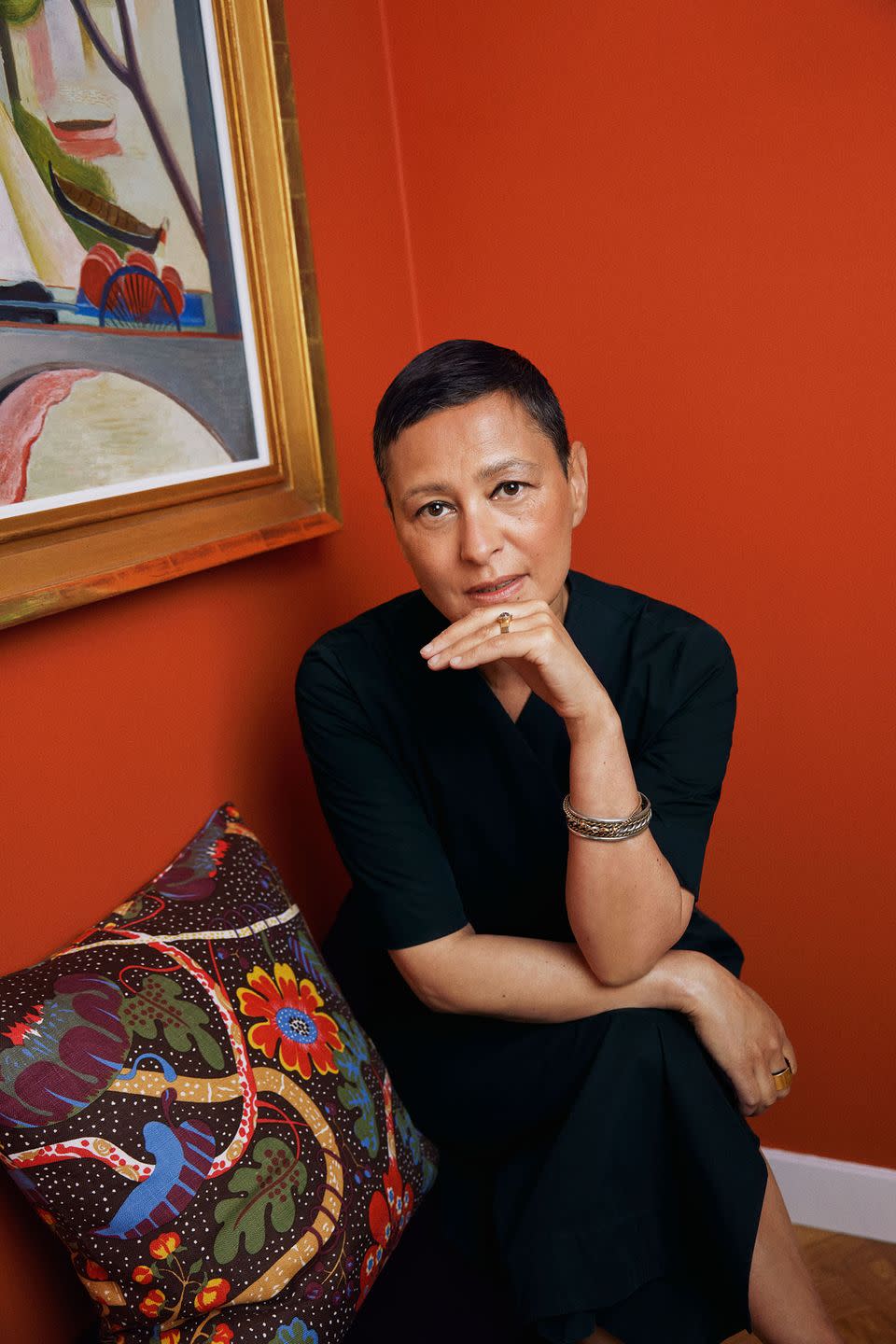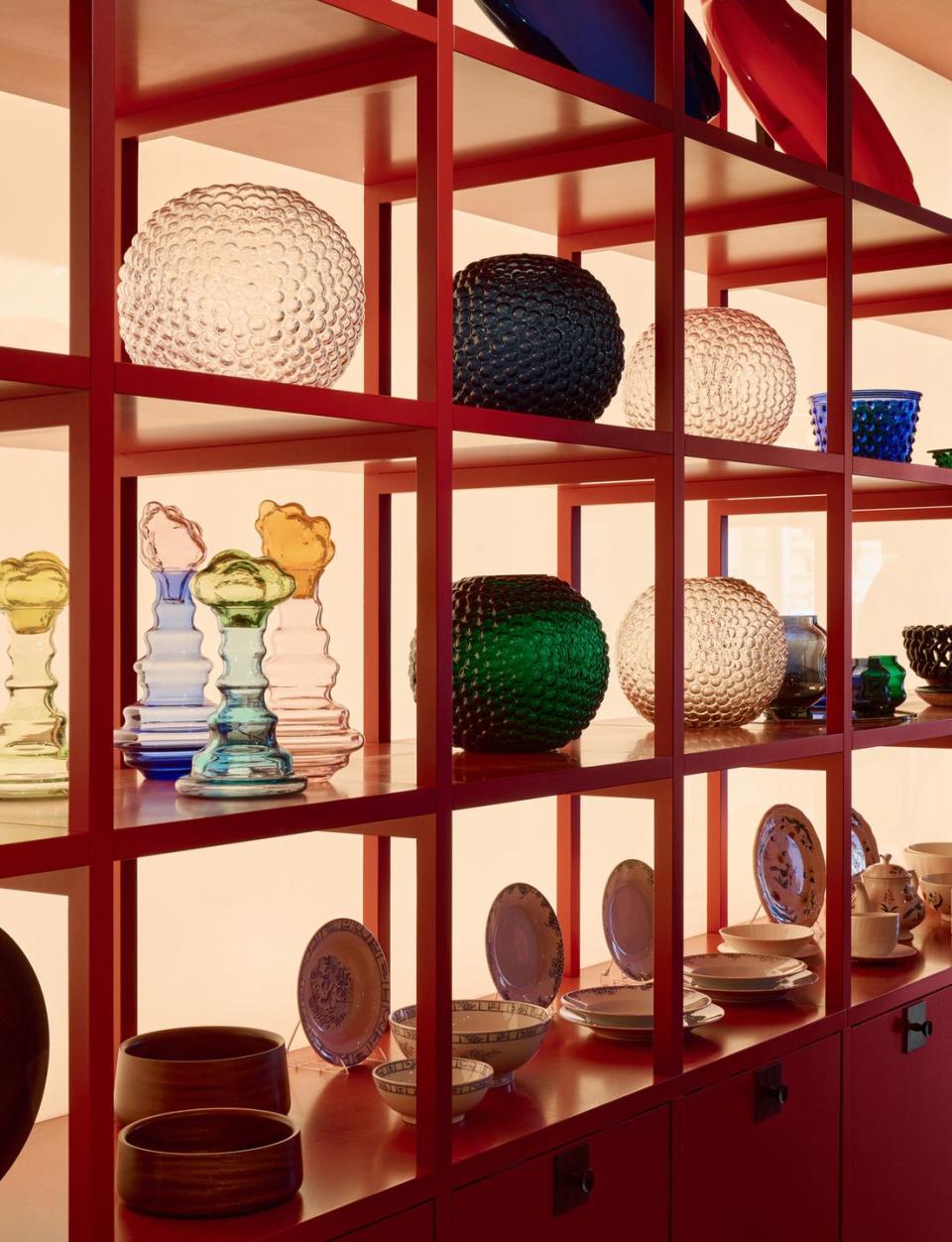Inside the Legendary Swedish Store Josef Frank Built

Above: Svenskt Tenn head curator and interior decorator Karin Södergren.
In a world fixated on scale and expansion, it takes a quiet confidence to maintain one storefront for 100 years. That store would need to be more than a place to shop—it would have to embody a philosophy, selling consumers on a vision more than a product.
Founded by Estrid Ericson in 1924 in Stockholm—at a time when women still didn’t have the right to vote in Sweden—Svenskt Tenn is such a place. Its humble origins belie the breadth of creative ambition underpinning Ericson’s ideals, namely that the home should be a place of comfort as much as beauty. (The name means simply “Swedish pewter,” as Ericson and her collaborator at the time, artist Nils Fougsetdt, made objects in the less-precious metal.)

Ericson brought on the legendary Austrian architect and designer Josef Frank in 1934 to help direct the company. Its home on Strandvägen, a street in central Stockholm, remains its only location to this day.
“I’m constantly working with Estrid Ericson and Josef Frank,” says Karin Södergren, head curator and interior decorator for the company. “Josef was such a strong humanist. He always put the person at the heart of everything he was doing, while Estrid was such an artist in how she arranged things. Those two together created what we are still doing today. Their way of seeing the world is what we work with all the time.”

Today, Svenskt Tenn is still run by a woman, CEO Maria Veerasamy, who has a background working with glass and joined the company from her own women’s suit tailoring practice. “I love imperfections,” she says. “Imperfections show that a hand has been there.” This sentiment echoes Frank’s philosophy on living well, less a mandate than a set of guidelines that need to be experienced firsthand.
Frank himself only believed in white walls, but thought every room should ideally have five or six patterns, many of which he famously developed exclusively for the company. That Svenskt Tenn staff wear head-to-toe black so as not to distract from the fabric and furniture aligns with this mindset perfectly. “We are not so anxious about mixing,” adds Veerasamy.

There are, of course, more pragmatic stipulations to the good life. The four rooms Ericson and Frank focused on were the dining room, living room, home office, and library. Each room would ideally be built around area rugs with furniture placed around them, to help define space. Furniture should be on legs so that there is a sense of visual lightness, but there cannot be any floral carpets because “you don’t want to crush them,” Veerasamy says.
Part of Södergren’s work over the last 20 years she’s been with the company is to document this holistic approach to interior design through exhibitions and archival photos. She has organized shows with everyone from Jonny Johansson, of the Swedish brand Acne, to ELLE DECOR A-List Titan India Mahdavi, and last year oversaw an installation of pleated lamps designed with the local studio Folkform. “That’s such a great thing about Svenskt Tenn, that we don’t have one style—we have many,” Södergren says.

A centenary retrospective at the art hall Liljevalchs, Svenskt Tenn: A Philosophy of Home, slated to open in late September, is something of Södergren’s opus. Curated in partnership with London-based writer Jane Withers, the history of the company—and the enduring partnership between Ericson and Frank that forged it—will be thoughtfully displayed across 13 themed rooms.
“My job is to inspire people,” Södergren says. “I want people to come to Liljevalchs and see new sides of the company, new sides of Frank and Ericson, and to leave feeling inspired by the potential in their own home.”
You Might Also Like


